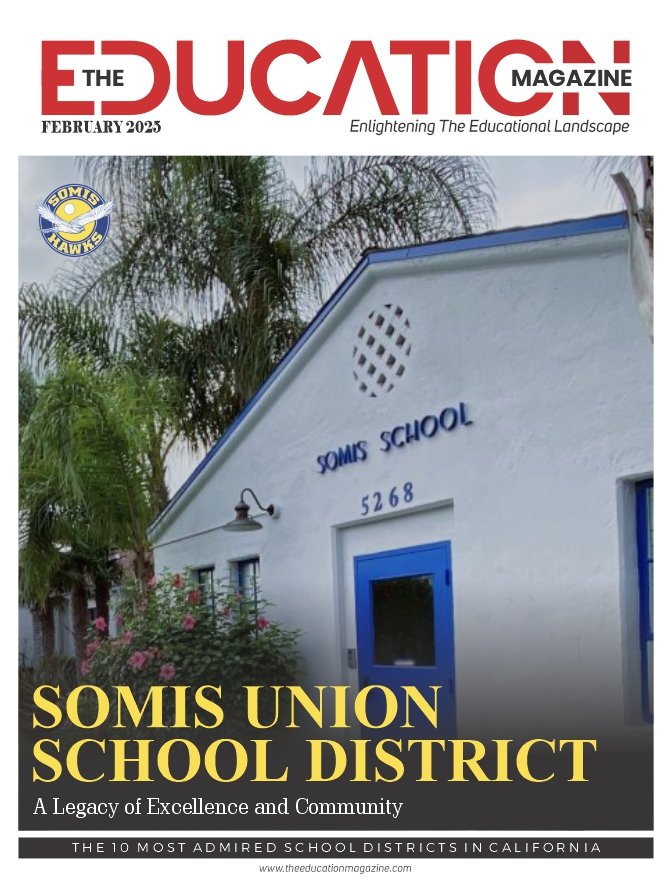Brief Overview of the EB-5 Immigrant Investor Program
The EB-5 Immigrant Investor Visa Program allows foreign investors to obtain a green card in the United States by investing in businesses that create jobs for U.S. workers.
Investment Requirement: The EB-5 program mandates applicants to invest at least $1,050,000 in a new business in the United States. Nonetheless, the minimum investment can be reduced to $800,000 if the investment is made in a Targeted Employment Area (TEA), which includes high-unemployment areas (HUA) or rural areas.
Job Creation: the investment must create at least 10 full-time jobs for eligible U.S. workers within two years (sustainment period) of the EB-5 investor becoming a Conditional Permanent Resident in the United States.
Conditional Permanent Residence: After the EB-5 petition is approved, investors and their immediate family (dependents) receive two years of conditional permanent residency in the United States.
Removal of Conditions: During the 90-day window before the end of the 2-year conditional EB-5 Visa Requirements residency period, investors must submit a request to lift the restrictions on their permanent residency. This request must include proof that the investment is ongoing and that the necessary jobs have been established.
Green Card: After meeting the requirements, investors and their families receive permanent residency in the US—a green card—, which allows them to reside, work, and pursue education in the country without any restrictions.
Benefits: The EB-5 program provides numerous advantages, such as the freedom to reside and work anywhere in the United States, access to educational and healthcare services, and the potential to seek U.S. citizenship.
To make well-informed investment decisions, potential EB-5 investors must understand the requirements of the EB-5 visa program. It is crucial to comply with program regulations, navigate the application process skillfully, and evaluate the risks associated with seeking permanent residency through the EB-5 program.
Types of acceptable investments
(direct investment vs. regional center investment).
New Commercial Enterprise: Investors can establish a new for-profit business entity in the United States. An NCE can be a corporation, partnership, sole proprietorship, or other business structures recognized under U.S. law.
Troubled Business: Investors can also invest in existing businesses that have experienced financial difficulties, such as declining net worth, job loss, or other issues that have resulted in financial losses.
Regional Center Projects: Many EB-5 investors choose to invest in projects facilitated by EB-5 Regional Centers. These are organizations approved by the United States Citizenship and Immigration Services (USCIS) to promote economic growth, job creation, and regional development through EB-5 investments. Regional Center projects often involve real estate development, infrastructure projects, or other large-scale ventures.
Targeted Employment Areas (TEAs): Investments made in areas of high unemployment (HEAs) or rural areas that qualify for a reduced minimum investment amount of $800,000, as opposed to the standard $1,050,000 requirement for investing anywhere else in the U.S. The former are Targeted Employment Areas (TEAs).
Direct Investments vs. Indirect Investments: EB-5 investors can choose between making direct investments, where they have a direct ownership stake and control over the business, or making indirect investments through Regional Centers, where their capital is pooled with funds from other investors for larger-scale projects.
Job-Creation Requirement: Regardless of the type of investment, the primary goal is to create or preserve at least 10 full-time jobs for qualifying U.S. workers within two years of the investor’s admission to the United States as a Conditional Permanent Resident.
It is crucial for EB-5 investors to thoroughly assess potential investment opportunities, perform due diligence, and verify that their selected investment meets all EB-5 program criteria to increase the chances of a successful application.
Documentation needed to prove the lawful source of investment funds.
Personal Tax Returns: Copies of personal tax returns for the past five years can help verify the investor’s income and financial history.
Business Tax Returns: If the investor owns or has owned a business, copies of business tax returns for the past five years may be required to demonstrate income generated from the business.
Bank Statements: Bank statements from personal and business accounts should be provided to show the accumulation and transfer of funds for the investment.
Pay Stubs and Employment Verification: Documentation of employment, such as pay stubs, employment contracts, and letters from employers, can help confirm the source of the investor’s income.
Investment Statements: Statements from investment accounts, such as brokerage accounts, mutual funds, or retirement accounts, can be used to verify the source of investment funds.
Real Estate Documents: If funds were obtained from the sale of real estate, documentation such as property sale contracts, deeds, and property valuation reports should be provided.
Inheritance Documents: If funds were inherited, documentation such as wills, probate documents, and inheritance tax records can help verify the source of funds.
Gift Letters: If funds were received as a gift, a gift letter from the donor explaining the nature of the gift, the relationship between the donor and the investor, and confirmation that the gift is not a loan may be required.
Legal Documentation: Any legal documentation related to the source of funds, such as court judgments, settlement agreements, or divorce decrees, should be provided if applicable.
Other Documentation: Depending on the investor’s specific circumstances, additional documentation, such as contracts, sale agreements, or other financial records, may be required.
Application Process
Choose an Investment Project: The first step is to identify and select a suitable EB5- visa project that meets the requirements of the EB-5 visa program. This could involve investing in a NCE, a troubled business, or a project facilitated by an EB-5 Regional Center.
Due Diligence: Conduct thorough due diligence on the chosen investment project to assess its viability, job creation potential, and compliance with EB-5 program requirements. This may involve reviewing project documents, financial statements, and legal agreements.
Secure Investment Capital: Transfer the required investment capital ($1.05 million or $800,000 if investing in a TEA) into a U.S. bank account or escrow account designated for the investment project. Document the lawful source of funds through financial records, tax returns, and other supporting documentation.
File Form I-526: Prepare and submit Form I-526, Immigrant Petition by Alien Investor, to the United States Citizenship and Immigration Services (USCIS). Along with the form, include supporting documentation to demonstrate eligibility for the EB-5 program, including proof of investment funds and evidence of job creation potential.
Adjudication of Form I-526: USCIS will review the submitted Form I-526 and supporting documentation to determine eligibility for the EB-5 program. This process may take several months to complete, during which the USCIS may request additional requests for evidence (RFE) or clarification.
Conditional Permanent Residency: If Form I-526 is approved, investors and their eligible family members (spouse and unmarried children under 21) can apply for conditional permanent residency in the United States. This involves submitting Form I-485 to EB-5 investors already in the U.S. or Form DS-260 (Immigrant Visa Electronic Application) for visa applicants not in the U.S: (done at a U.S. consulate or embassy abroad).
Entry into the United States: Once the immigrant visa is approved, investors and their family members can enter the United States as conditional permanent residents. Upon entry, they will apply for Form I-551, also known as a “green card,” which grants them temporary lawful permanent residency status.
Remove Conditions on Permanent Residency: Within the 90-day period before the expiration of the two-year conditional residency period, investors must file Form I-829, Petition by Entrepreneur to Remove Conditions, to remove the conditions on their permanent residency. This requires demonstrating that the investment was sustained and that the required jobs were created.
Adjudication of Form I-829: USCIS will review the submitted Form I-829 and supporting documentation to determine eligibility for the removal of conditions on permanent residency. If approved, investors and their family members will receive unconditional permanent residency in the United States.
EB-5 investors should team up with seasoned immigration attorneys and financial advisors to navigate the application process smoothly and increase the chances of a favorable result.
Role of immigration attorneys and regional centers.
Immigration attorneys and Regional Centers play crucial roles in the EB-5 visa process, providing guidance, expertise, and support to investors throughout the application journey:
Immigration Attorneys:
Legal Guidance: Immigration attorneys specialize in navigating the complex legal requirements of the EB-5 program. They provide comprehensive guidance on eligibility criteria, investment options, documentation requirements, and compliance with U.S. immigration laws.
Document Preparation: Attorneys assist investors in preparing and submitting the necessary immigration forms, petitions, and supporting documentation, ensuring accuracy and completeness to avoid delays or denials in the application process.
Due Diligence: Attorneys conduct thorough due diligence on behalf of investors, reviewing investment projects, legal agreements, financial documents, and other relevant information to assess the viability and compliance of potential investments with EB-5 program requirements.
Communication with USCIS: Attorneys serve as intermediaries between investors and the United States Citizenship and Immigration Services (USCIS), communicating with USCIS officials, responding to requests for evidence (RFEs), and addressing any issues that may arise during the adjudication process.
Representation in Interviews: In cases where interviews are required, such as the immigrant visa interview for conditional permanent residency, attorneys provide representation and advocacy on behalf of investors, ensuring their interests are protected and their rights are upheld.
Legal Compliance: Attorneys ensure that investors comply with all legal and regulatory requirements of the EB-5 program, including the lawful source of investment funds, job creation obligations, and removal of conditions on permanent residency.
Regional Centers:
Project Development: EB-5 Regional Centers identify and develop investment projects that qualify for the EB-5 program. They undertake the planning, development, and management of projects in various industries, such as real estate development, infrastructure, hospitality, and healthcare.
Job Creation Analysis: Regional Centers conduct economic analyses to assess the job creation potential of investment projects, ensuring that they meet the EB-5 program’s requirement of creating or preserving at least 10 full-time jobs for U.S. workers per investor.
Investor Recruitment: Regional Centers actively market and promote their EB-5 projects to potential investors, both domestically and internationally, seeking to attract capital investment for project financing.
Investor Support: Regional Centers provide support and assistance to EB-5 investors throughout the investment process, offering information, resources, and guidance to help investors make informed decisions and navigate the EB-5 program successfully.
Project Monitoring: Regional Centers oversee the progress of investment projects and monitor compliance with EB-5 program requirements, ensuring that investors’ funds are used appropriately and that job creation targets are met.
EB-5 a residency-by-investment option in the United States
To summarize, the EB-5 visa program provides a special chance for foreign investors to achieve permanent residency in the United States through eligible investments in businesses that create jobs. However, obtaining an EB-5 visa can be intricate, demanding thorough preparation, research, and adherence to program guidelines.
Immigration lawyers and EB-5 Regional Centers are crucial in assisting investors through the application process. Lawyers offer legal advice, prepare documents, conduct due diligence, and represent investors, helping them adhere to immigration regulations and increase their chances of success. Regional Centers locate and create investment opportunities, analyze job creation potential, attract investors, and deliver support services to promote investment and project achievements.
By collaborating with seasoned professionals and advisors, EB-5 investors can successfully navigate the program, reduce risks, and reach their immigration and investment objectives. The EB-5 visa program provides a route to permanent residency and also stimulates economic growth, generates employment opportunities, and fosters regional development within the United States.
In general, the EB-5 program offers a win-win opportunity for investors looking to immigrate and for the US economy needing investment and job growth. By preparing and acquiring professional support, investors can smoothly navigate the EB-5 process and achieve their goals of settling and working in the United States.
Also Read: The American Dream: Exploring EB-5 Immigration Opportunities










